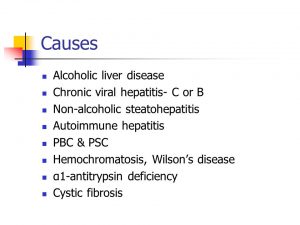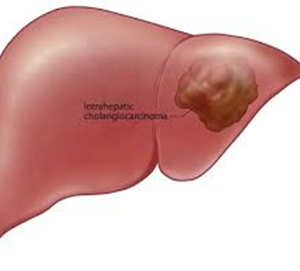
Treatment
Treatment varies from life-style modifications to drugs to surgery depending on the specific
cause. Changes in life-style include stopping alcohol use, regular exercise, diabetes and weight
control for fatty liver, Chronic liver damage is managed conservatively with drugs initially and
Liver transplant for end stage liver problem
Liver Disease Prevention
Healthy life style with regular exercise and weight management is must for healthy liver.
Diabetes control. It is predicted that Fatty liver will be the leading cause of liver failure
and liver cancer in future. Avoid alcohol intake and smoking. Hepatitis B vaccine is available.
Unprotected sex, infected blood transfusion, sharing infected needles are risk for hepatitis
infection and should be avoided
Hepatocellular Cancer / Liver Cancer
It is the most common primary malignant liver tumor; Occur after the age of 50 year and
incidence is more common in male patient; In 80% of cases it occur under the background of
chronic hepatic disease while in another 20% it occur in normal liver background. The 5 year
survival rate of these patients is very dismissal approx. only 12%. It is the reason, primary
prevention is the best strategy against hepatic cancer
Causes: The common causes of chronic hepatic disease in these patients are Alcohol,
Hepatitis B & C infection and Steatohepatitis. HBV infection can cause liver cancer in the
absence of cirrhosis.
Prevention: Hepatitis B vaccine is available and every new born should be immunized
immediately after birth. Treatment is available for Hepatitis B & C infection. High risk person
to these infections should be tested and if +ve, treatment should be started. Infact Hepatitis C
infection is one of the few viral infection which is curable. Excessive alcohol intake should be
discouraged. Environmental toxins should be avoided. Maintain a healthy weight, do regular
exercise, control diabetes to prevent from fatty liver. As the incidence of obesity is
increasing, it is estimated that it can be the leading cause of liver failure and hepatic cancer
in next decade if not controlled now
Symptoms: One of the early sign of Hepatocellular cancer or liver cancer is sudden
decompensation in patients of cirrhosis who were otherwise stable; These patients may develop
jaundice, new onset or refractory ascites. Patient with normal liver generally present with
right upper abdomen pain along with anorexia & weight loss
Diagnosis: Imaging modality of choice for diagnosis is triple phase CT abdomen which
reveals typical arterial enhancement and portal venous phase washout of lesion. Tumor marker is
alpha-fetoprotein; Typical feature on CT along with raised alpha-fetoprotein is sufficient for
diagnosis of hepatic Cancer; FNAC is not done because of risk of seedling of needle tract.
However FNAC is done in non-cirrhotic patients
Treatment: It is complicated by the fact that in 80% it occur in diseased liver, so while
planning any treatment options we have to consider the liver condition & tumor characteristics
If the patient is listed for liver transplant because of cirrhosis and develops liver cancer
than transplant is the only option. It will take care of underlying liver condition and cancer
also
In early cirrhotic patients with well controlled disease who at present does not require
transplant, Surgical resection is a good option
If Surgical resection is not possible or patient is not fit for surgery then there are various
non-surgical methods available which should be done according to the criteria fulfilled


